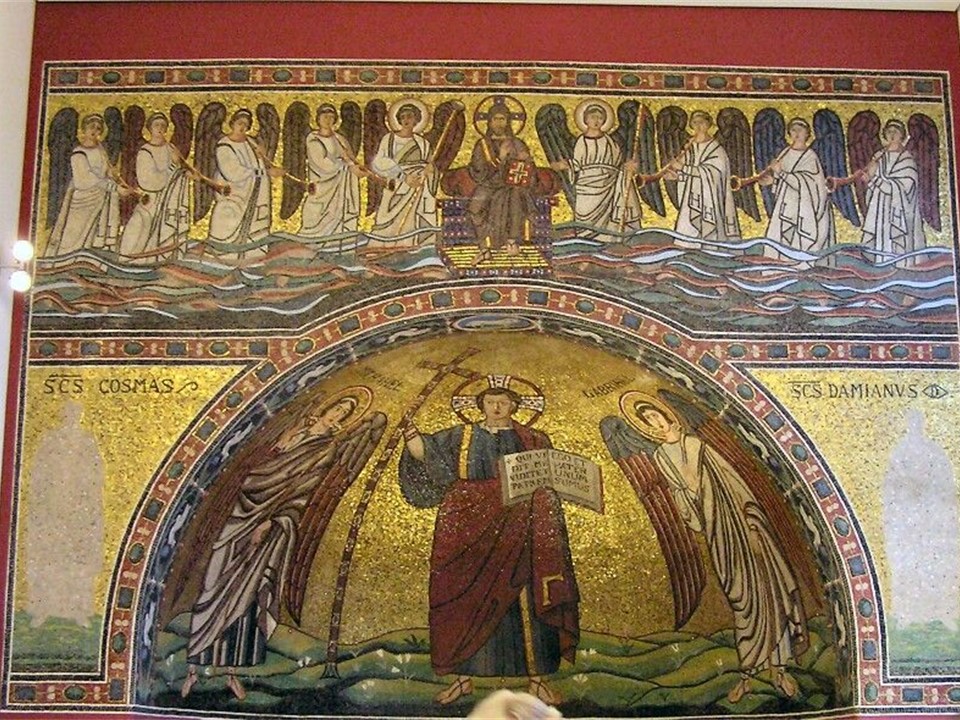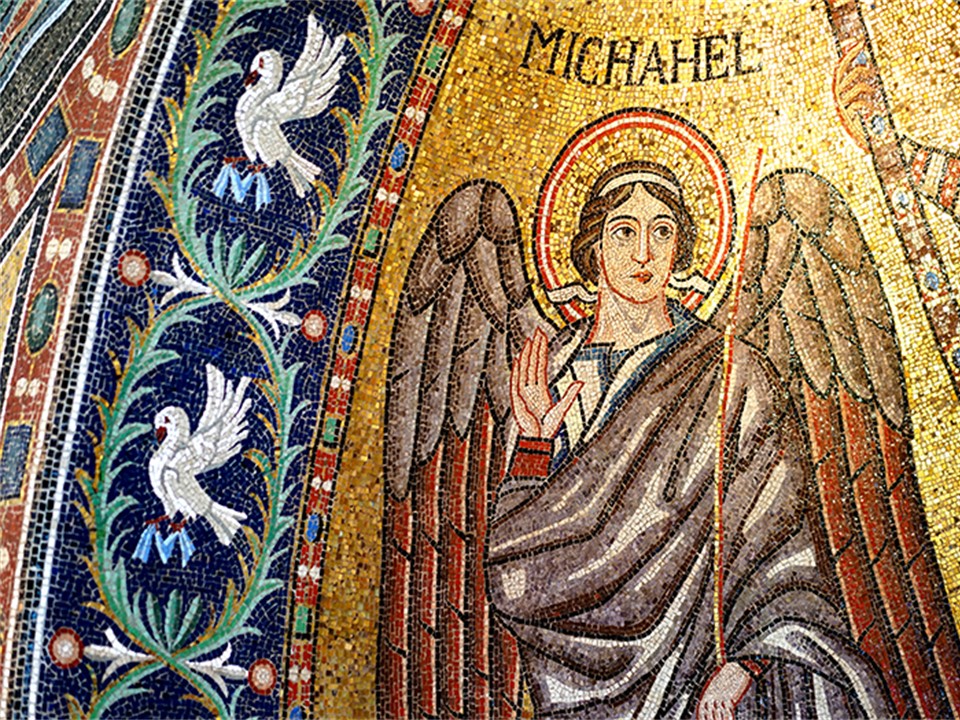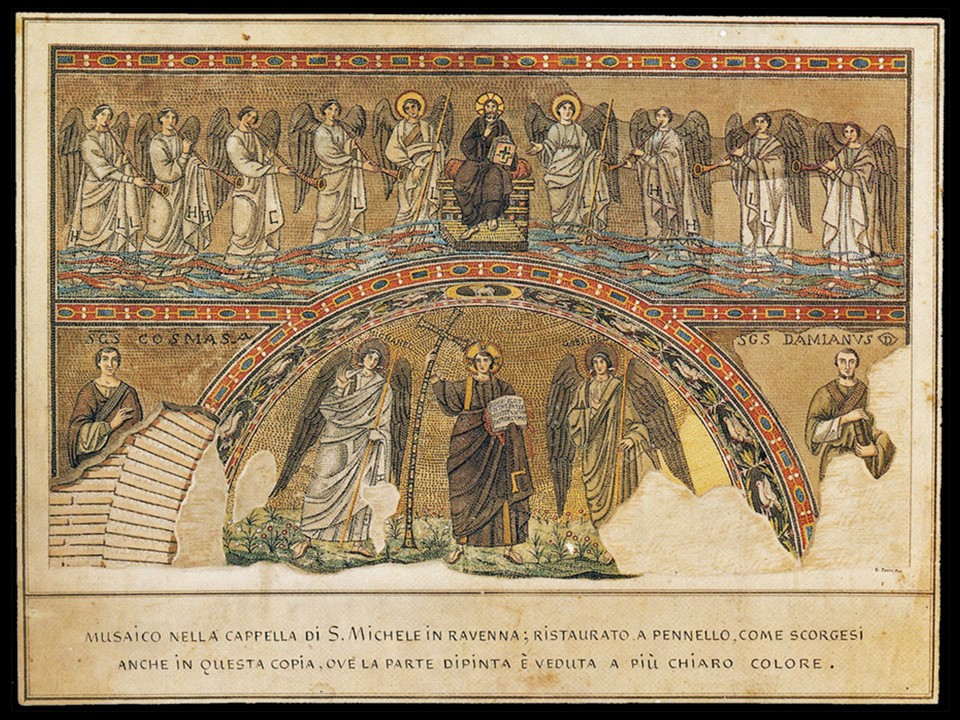
The 6th century Church of San Michele in Africisco has an amazing story to tell! It all started in Ravenna… when Giuliano Argentarius, a Byzantine court official and banker of great wealth and devotion, commissioned, as a votive offering to Archangel Michael, a new church in the Ravennate neighborhood known as Frigiselus.
Guliano’s Church in Figiselus, known as San Michele in Africisco, was magnificently adorned with mosaics and marble adornments. Unfortunately, the church as a place of worship no longer exists due to alterations and lootings. Very little of the original wall structures stand, while mosaics and sculptural pieces are scattered among the Bode Museum in Berlin, the National Museum of Ravenna, the Museum of Torcello, the Victoria & Albert Museum, and St. Petersburg. Today, in place of the church there is a Max Mara shop!

The Napoleonic Wars and conquest of Ravenna in 1805 are the beginning of the Church’s end. “San Michele was purchased by Andrea Cicognani and became a fish shop. In 1840 it was sold to antique dealer Giuseppe Buffa, who made a wood store out of it and built a wall to protect its apse mosaic. During those years an envoy of King Frederick William IV of Prussia was sent to visit the church, and he ordered the purchase of the apse mosaic. He obtained Pope Gregory III’s permission to take it to Berlin, but first, it was necessary to remove the mosaic from its wall support. Alessandro Cappi, secretary of the Accademia delle Belle Arti of Ravenna, refused to detach the mosaic… but Vincenzo Pajaro, a Venetian antique dealer, removed the mosaic…and eventually sent it to Berlin.” http://www.mosaicoravenna.it/convegno/la-diaspora-dellarcangelo-san-michele-in-africisco-e-leta-giustinianea/?lang=en
Today, the San Michele Apse Mosaic is the main attraction of the Bode Museum in Berlin. The mosaic’s main composition depicts a rare youthful and beardless Christ, standing between the winged Archangels, Michael and Gabriel, holding a monumental, bejeweled Cross and an open Bible. The apsidal mosaic is placed under a frieze of vines and doves, supposed to represent the Twelve Apostles. Missing today, the Apse mosaic is flanked by standing depictions of Cosmas and Damian, the early Christian medicinal saints. Right above the apse, on a frieze-like wall, the 6th-century mosaicist depicted an older looking, bearded Christ, seated on a throne, flanked, once more by the Archangels and seven angels sounding trumpets.

Very little is known about Giuliano Argentarius, the founder of San Michele in Africisco. However, I did find some information about his extraordinary deeds in an article titled “Banking in Early Byzantine Ravenna” by Salvatore Cosentino. For more… please check: https://journals.openedition.org/crm/13746
Valuable information about the Church and its Mosaics can be accessed in “Reassembled Art and History: The San Michele in Africisco (Ravenna)Mosaics” by Carla Linville White, 2014, Louisiana State University and Agricultural and Mechanical College Master’s Theses: https://docplayer.net/54185237-Reassembled-art-and-history-the-san-michele-in-africisco-ravenna-mosaics.html
For a 3D Reconstruction of San Michele in Africisco by Lorenzo Mariani, please see: https://www.youtube.com/watch?v=FON1E-z5sIU
For a PowerPoint on the Church of San Michele Africisco, please… check HERE!